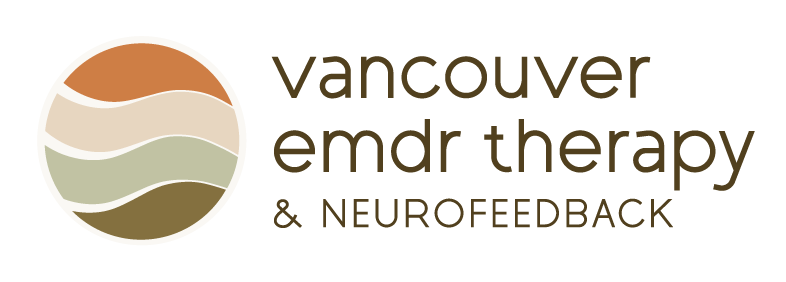Trauma can rob ones sense of safety, joy and connection to themselves and the world around them. Restoring wellness after trauma can give a person a greater appreciation for life, connection to others, compassion to self and others and gratitude for meaningful life experiences. The road to recovery from trauma and chronic stress can be challenging. Research shows the importance of EMDR (Eye Movement Desensitization and Reprocessing) in the treatment of PTSD (Post Traumatic Stress Disorder), chronic stress and other traumas. In conjunction to EMDR there are also many healing modalities that help to restore wellness when a person has been traumatized. They include yoga, meditation, movement therapies and energy healing practices.
a greater appreciation for life, connection to others, compassion to self and others and gratitude for meaningful life experiences. The road to recovery from trauma and chronic stress can be challenging. Research shows the importance of EMDR (Eye Movement Desensitization and Reprocessing) in the treatment of PTSD (Post Traumatic Stress Disorder), chronic stress and other traumas. In conjunction to EMDR there are also many healing modalities that help to restore wellness when a person has been traumatized. They include yoga, meditation, movement therapies and energy healing practices.
Post traumatic growth is a term used to describe the personal growth that many trauma survivors experience in their recovery process. Research shows that 30-70% of all trauma survivors will experience post traumatic growth in their healing process. This growth can change a person’s life philosophy, bring greater awareness of their personal strengths, create a greater sense of gratitude, increase their appreciation for the “small things” in life and even prompt spiritual growth.
Restoring wellness after trauma can be achieved in the following four ways:
1.Restoring ownership of our minds–
EMDR therapy addresses the negative cognition’s and beliefs that are imprinted in a person’s mind as a result of a traumatic experience. These negative beliefs can include thoughts such as; I am to blame, I am bad, I am incapable, or I am ashamed. These negative thoughts hijack our minds and nervous systems. When the traumatic experience has not been fully processed in a safe manner the beliefs as well as the memories or flashbacks continue to interfere in daily living. This interference makes it difficult for people to focus at work, feel safe leaving their house, be close to others in relationships or even sleep at night. In addition, to EMDR therapy mindfulness and meditation practice are helpful in calming our minds and regulating our central nervous system letting us feel safe when we are safe. Trauma survivors benefit by extra care with meditation including a structured practice with support from an trauma informed instructor to help keep awareness on body sensations and modulate emotional arousal and breath. To learn more about mindfulness please visit mindfulminutes.com.
2. Restoring ownership of our bodies–
Reconnecting with ourselves, our body and its messages are essential for healing. EMDR therapy helps to process the traumatic memories so that our minds and body can release the trauma. This allows us to know that the past is in the past  and that the threat is over. Regulating our bodies allows us to remain calm during times of everyday stress, re- inhabit our bodies, be attuned again to the messages of hunger, sleep, safety, emotions etc. As the body heals the tension being held in the body is released, blood circulation improves and the body increases oxygen levels and reduces inflammation. Yoga, mindfulness, meditation, breathing practices as well as dance/movement therapies help restore the connection to the body. Yoga experts have identified poses that release trauma held in our body. These poses focus on areas of the body known for holding trauma including: the pelvis, diaphragm, throat, jaw, hamstrings, shoulders and neck. To learn more about trauma informed yoga poses go to yogajournal.com and www.yogamate.org. And to learn more about the health benefits of yoga please read, 18 Amazing Benefits of Yoga, According to Science at https://www.jenreviews.com/yoga.
and that the threat is over. Regulating our bodies allows us to remain calm during times of everyday stress, re- inhabit our bodies, be attuned again to the messages of hunger, sleep, safety, emotions etc. As the body heals the tension being held in the body is released, blood circulation improves and the body increases oxygen levels and reduces inflammation. Yoga, mindfulness, meditation, breathing practices as well as dance/movement therapies help restore the connection to the body. Yoga experts have identified poses that release trauma held in our body. These poses focus on areas of the body known for holding trauma including: the pelvis, diaphragm, throat, jaw, hamstrings, shoulders and neck. To learn more about trauma informed yoga poses go to yogajournal.com and www.yogamate.org. And to learn more about the health benefits of yoga please read, 18 Amazing Benefits of Yoga, According to Science at https://www.jenreviews.com/yoga.
3. Restoring connection to others–
It is important to be engaged with trusted individuals in order to heal from trauma. As mammals we are designed to need others for connection, closeness and safety. Trauma experiences can impact our ability to reconnect. EMDR therapy can process the traumatic memories and experiences of ways that we were hurt often at the hands of another and restore our ability to trust again. The more that we can show compassion and forgiveness to ourselves the more that our self love can grow and the greater ability we will have to connect to others. This process can be supported by Loving Kindness meditations and in an array of self care practices such as yoga, Reiki (energy healing) and trauma sensitive massage. To learn more about the Loving Kindness meditation please go to https://jackkornfield.com/meditation-lovingkindness.com.
4. Restoring our beliefs–
Rumi, a great poet once said- “The wound is the place the light enters you”. Many people believe the healing from trauma is also a spiritual journey. EMDR therapy will process the traumatic memories which haunt us. Some of the darkest experiences we as humans can face will also make us question our beliefs and mankind in general. In the process of healing from trauma we can reconnect to ourselves, others and to a Higher Power. Recent research in neuroscience shows that to change the way we feel, we must become aware of our inner experience and learn to accept and make friends with what is happening inside us. There are many meditations and/or prayer practices that can support this process. Holistic treatments such as, acupuncture and Reiki can also help with “stuck points” of energy and allow an openness in our heart for healing to take place.
Lemecia Lindsey is a certified EMDR therapist and an EMDR Consultant. She helps men and women recover from trauma and restore their sense of wellness. Many of the holistic practices mentioned in this blog are offered by her colleagues at the Vancouver Wellness Studio. To view Lemecia Lindsey’s website please go to www.vancouveremdrtherapy.com and to learn more about EMDR therapy please visit www.emdr.com. Lemecia practices at Vancouver Wellness studio. Many of her clients use the holistic services provided to support their recovery. Please visit www.vancouverwellnessstudio.com for more information about the restorative services and to make an appointment with one of the practitioners.




